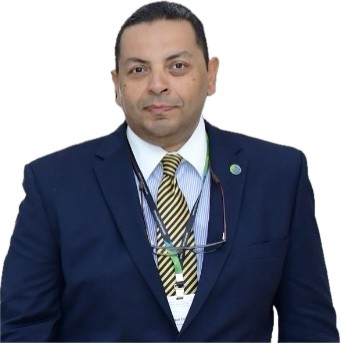As world leaders, negotiators, and climate finance institutions convene in Belém, Brazil, for the 30th UN Climate Change Conference (COP30) from November 10 to 21, 2025, one issue is increasingly shaping the global agenda: water security. In a region like the Middle East and North Africa (MENA) — where water scarcity, population growth, and climate extremes intersect — achieving resilience requires not only innovative solutions but also robust financial mechanisms that turn climate ambition into concrete action.
In this interview, Dr. Amgad Elmahdi, Regional Manager for the Middle East and North Africa at GCF, shares his insights on the region’s priorities for water resilience, the persistent challenges in mobilizing finance, and what tangible success at COP30 would look like — both for MENA and for global climate action.
-Water security is increasingly at the heart of climate discussions. What are the key priorities or challenges for the MENA region in this area at COP30?
Key priorities include: (1) scaling integrated water–climate investments that combine supply, demand management, and ecosystem restoration; (2) strengthening transboundary cooperation and improving data and information systems; and (3) mobilizing blended finance for non-conventional water solutions, such as desalination powered by renewables, managed aquifer recharge, and water reuse. The GCF’s recent Water Project Design Guidelines are designed to support precisely these integrated approaches. Major challenges remain — particularly the persistent financing gaps for adaptation, fragmented institutional mandates, high upfront costs for resilient infrastructure, and the need for bankable project pipelines that meet investor standards. In the region’s arid context, prioritizing nature-based solutions alongside technology and creating concessional windows to lower investment risk will be essential to move from planning to implementation. Water security underpins MENA’s stability and resilience. Ahead of COP30, three priorities stand out: (1) scaling coordinated investments that link water, energy, food, and ecosystem resilience; (2) fast-tracking access to finance for climate-resilient water infrastructure through simplified modalities such as the GCF’s Simplified Approval Process (SAP); and (3) strengthening governance and data systems to support integrated water resources management at both national and transboundary levels. The main challenge remains chronic underinvestment in water adaptation due to high perceived risks and fragmented governance. GCF, together with UN-Water in preparation for UN-Water 2026, is advancing a programmatic approach to strengthen global and regional coordination, build technical capacity, and attract private investment for water projects aligned with SDG 6 and Nationally Determined Contributions.
– From your perspective, how can developing countries strengthen access to climate finance for water and adaptation projects?
Access begins with strong, country-driven pipelines and enabling institutional capacity. Through its Readiness and National Adaptation Plan (NAP) support programmes, GCF helps countries translate adaptation priorities into bankable, investment-ready proposals. Tools such as the Water Project Design Guidelines are specifically designed to support this process. To deepen access, countries should: establish national platforms that align donors, multilateral banks, and private investors around shared priorities; expand the use of innovative instruments — including blended finance, guarantees, and debt-for-climate swaps — to de-risk investments; reduce access barriers by accelerating accreditation of capable national and regional implementing entities, strengthening fiduciary and environmental–social safeguards, and scaling blended structures that combine grants with concessional loans and guarantees to attract private capital; and invest in data transparency and institutional capacity to accelerate project preparation and funding readiness. These steps align with the Financing for Development reform agenda — building a coherent, simplified, and accountable global finance architecture where developing countries can access resources at the scale and speed required.
-What lessons from previous COPs should guide negotiators this year to ensure more effective finance and implementation outcomes?
Past COPs have shown that agreeing on principles is only the first step. Operational modalities, clear timelines, and predictable replenishment paths determine whether finance actually reaches vulnerable communities. The key lesson is that pledges alone are insufficient — countries need operational pathways that make finance predictable, accessible, and rapidly deployable. Another lesson is that scaling up requires standardized project preparation methods and common de-risking instruments so private investors can assess and compare risks across jurisdictions. Negotiators should focus on embedding accountability and transparency in financial flows; promoting complementarity among climate funds and multilateral development banks to avoid duplication; expanding adaptation and concessional finance, especially for the most vulnerable; and advancing systemic reform of the global financial architecture to make it more inclusive and responsive to developing countries’ needs. In short, COP30 must translate reform momentum into practical coordination among climate funds, MDBs, and private financiers to turn commitments into measurable impact.
–What would tangible progress or a successful outcome at COP30 look like from your perspective?
Success at COP30 means moving from commitment to implementation. Tangible progress would include clear milestones toward reforming the international financial architecture to deliver concessional finance at scale; operationalization of innovative financing tools such as blended structures, guarantees, and climate-resilient bonds; launch of programmatic partnerships — such as the emerging UN-Water–GCF collaboration — to fast-track water and adaptation finance; and a measurable increase in adaptation allocations and direct access for vulnerable countries. A successful COP30 would leave us with a coordinated global framework, simplified access channels, and empowered national systems, ensuring that climate finance flows faster and reaches those who need it most. In relation to water, success means not only ambitious high-level statements but also concrete results: pre-identified, bankable water and adaptation portfolios for vulnerable regions (including MENA), time-bound commitments to scale concessional finance and guarantees, and operational regional offices and readiness mechanisms that enable rapid project implementation. “A successful COP30 means turning ambition into action. We want to see real commitments to scale adaptation finance, operationalize pledges, and deploy blended instruments for water and resilience projects. Success will be measured by finance flowing faster to the people and systems that need it most.”




